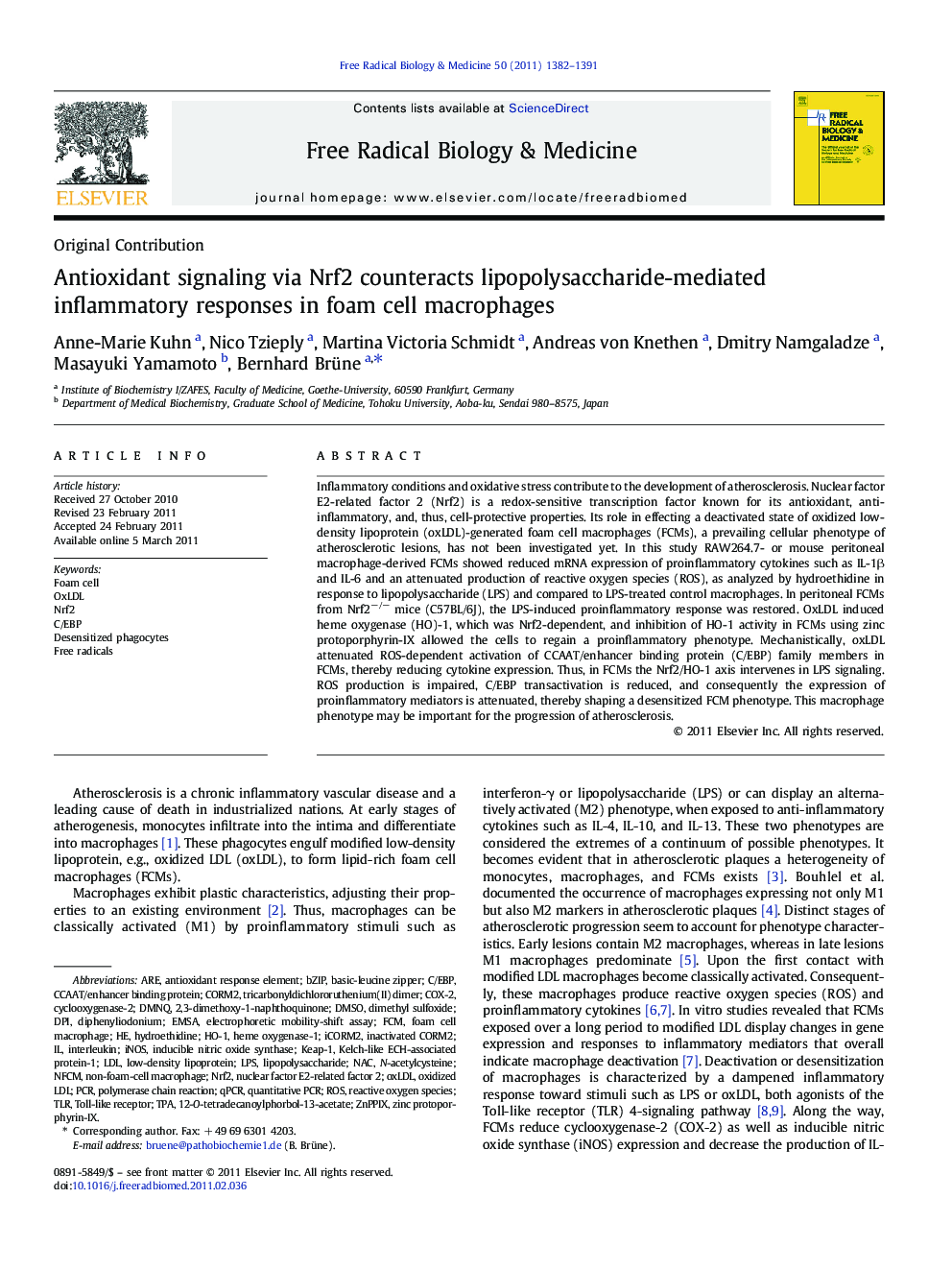| Article ID | Journal | Published Year | Pages | File Type |
|---|---|---|---|---|
| 10738401 | Free Radical Biology and Medicine | 2011 | 10 Pages |
Abstract
Inflammatory conditions and oxidative stress contribute to the development of atherosclerosis. Nuclear factor E2-related factor 2 (Nrf2) is a redox-sensitive transcription factor known for its antioxidant, anti-inflammatory, and, thus, cell-protective properties. Its role in effecting a deactivated state of oxidized low-density lipoprotein (oxLDL)-generated foam cell macrophages (FCMs), a prevailing cellular phenotype of atherosclerotic lesions, has not been investigated yet. In this study RAW264.7- or mouse peritoneal macrophage-derived FCMs showed reduced mRNA expression of proinflammatory cytokines such as IL-1β and IL-6 and an attenuated production of reactive oxygen species (ROS), as analyzed by hydroethidine in response to lipopolysaccharide (LPS) and compared to LPS-treated control macrophages. In peritoneal FCMs from Nrf2â/â mice (C57BL/6J), the LPS-induced proinflammatory response was restored. OxLDL induced heme oxygenase (HO)-1, which was Nrf2-dependent, and inhibition of HO-1 activity in FCMs using zinc protoporphyrin-IX allowed the cells to regain a proinflammatory phenotype. Mechanistically, oxLDL attenuated ROS-dependent activation of CCAAT/enhancer binding protein (C/EBP) family members in FCMs, thereby reducing cytokine expression. Thus, in FCMs the Nrf2/HO-1 axis intervenes in LPS signaling. ROS production is impaired, C/EBP transactivation is reduced, and consequently the expression of proinflammatory mediators is attenuated, thereby shaping a desensitized FCM phenotype. This macrophage phenotype may be important for the progression of atherosclerosis.
Keywords
bZIPEMSADMNQKelch-like ECH-associated protein-1Heme oxygenase-1iNOSDPICOX-2HO-1NACFCMLPSC/EBPDMSON-acetylcysteineinterleukinelectrophoretic mobility-shift assaydiphenyliodoniumDimethyl sulfoxidebasic-leucine zipperinducible nitric oxide synthaseCyclooxygenase-2antioxidant response elementKeap-1Low-density lipoproteinLDLlipopolysaccharideAREHydroethidineCCAAT/enhancer binding protein
Related Topics
Life Sciences
Biochemistry, Genetics and Molecular Biology
Ageing
Authors
Anne-Marie Kuhn, Nico Tzieply, Martina Victoria Schmidt, Andreas von Knethen, Dmitry Namgaladze, Masayuki Yamamoto, Bernhard Brüne,
